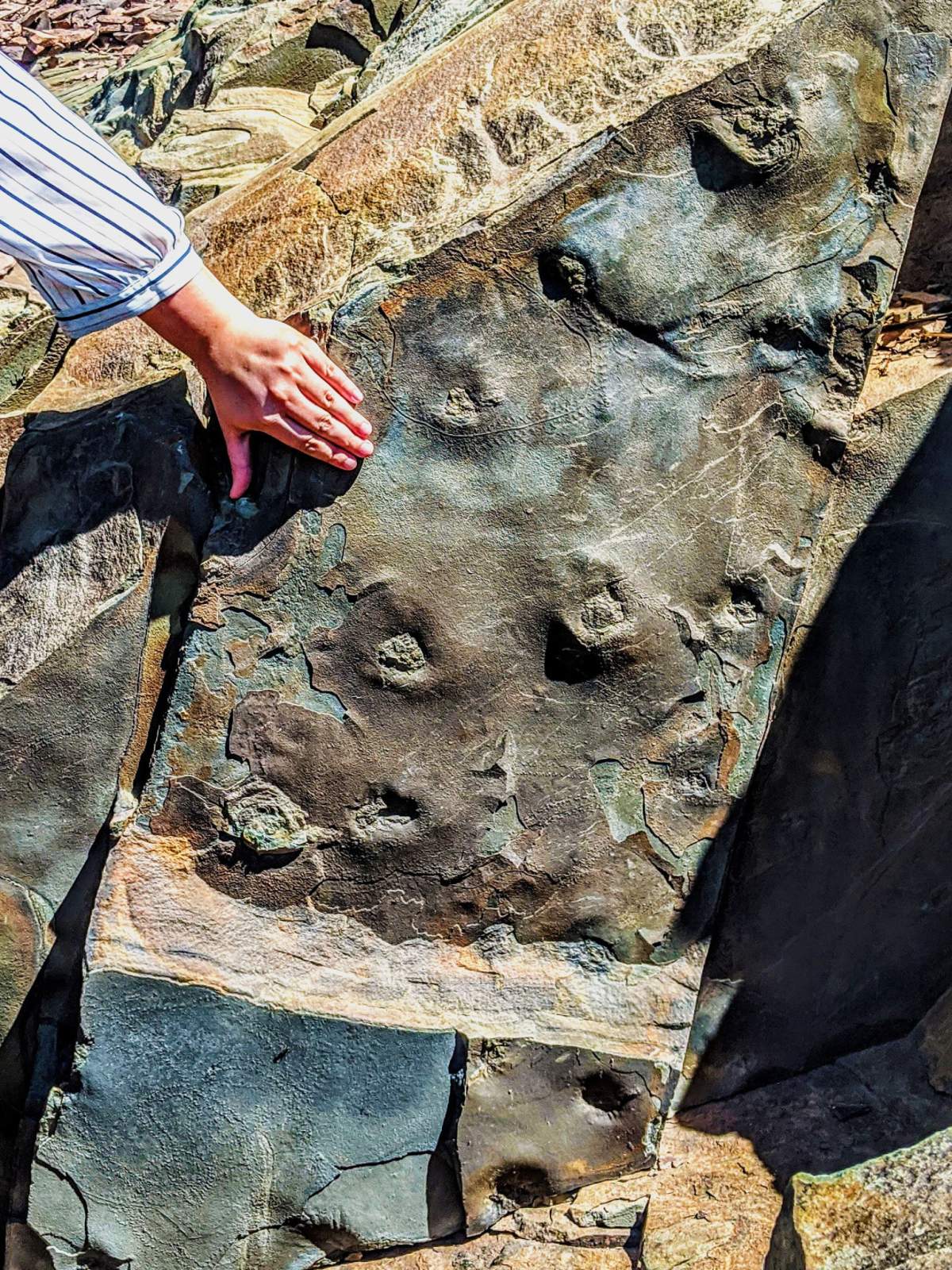In the summer of last year, a geology enthusiast stood in front of a cliff along Parrsboro beach that held markings of “a whole ecosystem” from millions of years ago.

“In the upper right, it looked like it was probably a small horseshoe crab had just walked across that little piece of mud 10 minutes before I got there,” said Jim Grue, a frequent visitor to the cliffs and beaches between Bass River and Parrsboro, N.S.
“I was blown away. I’ve seen other fossil trackways in the past, but it was just absolutely pristine,” he said.
READ MORE: 12-year-old Nathan finds rare dinosaur fossil ‘of great significance’ in southern Alberta
As a member of the Cumberland Geological Society Board of Directors, which oversees the Fundy Geological Museum on behalf of the Nova Scotia Museum, Grue recognized the find as a fossil trackway and alerted museum staff.
That’s when Director/Curator Danielle Serratos at the Fundy Geological Museum quickly assembled a team to excavate the trackways with the assistance of local landowners and volunteers.
“There’s well over a couple dozen trackways on the slabs that we brought in,” said Serratos.
She explains that fossil trackways are evidence of life that walked along that floor that is preserved.
According to the museum in collaboration with Mount Allision University, it has been determined that the trackways belong to Arthropleura, an ancient insect closely related to modern millipedes and centipede, as well as ancient horseshoe crabs.

Get breaking National news
This specimen also includes fossil tree and leaf impressions.
“The fossil can be dated to the late Carboniferous period (304–314 million years ago) when Nova Scotia was at an equatorial latitude and the area looked much different! Fossil finds such as these plants and trackways are important clues that help paint an image of ancient life and landscapes in the Bay of Fundy,” said the museum in a statement.

Serratos said these fossil finds are not common in that area, and are usually found in the Joggins Fossil Cliffs.
“They’re a little older than the Joggins formation,” she said. “But the most significant part of what we are witnessing is not just the trackways, it’s a snapshot in time of what the environment was like.”
Serratos said the museum still has the slabs in their labs where they had them cleaned up and analyzed.
“We will publish our findings in a peer-reviewed journal and then possibly put them on display after the publication goes through.”












Comments